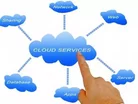A Guide to SaaS: How Does it Compare to On Premise Software?

As Software as a Service (SaaS) applications are quickly becoming the norm in many industries, the warehouse management systems industry is no exception. In this Guide, SaaS warehouse management system provider Snapfulfil explains what a SaaS system is, what the traditional on premise system is and the difference between web-enabled and web-based
Software as a Service Is the new kid on the warehouse block
The Software as a Service (SaaS) model of deploying software is fast becoming established in the warehouse management systems world. Warehouse Managers / Operations Managers are adopting this internet orientated model to offset the burden of server maintenance and data backup, whilst improving access to their system and providing employees with an intuitive user interface.
To assess the SaaS model, it is important to first understand what it is and how it differs from conventional software models. Most warehouse managers and operations managers are familiar with SaaS or “web-based” software, but few really grasp the differences between traditional client/server, web-enabled, web-based and SaaS systems.
What Is a SaaS System?
SaaS refers to a type of software deployment in which all of the system’s software and data is hosted and managed at a central point / data center operated by the software provider.
Warehouse managers simply use the warehouse management system through their web browsers and via a broadband Internet connection.
The software provider will manage data backups and updates. The warehouse will normally pay a monthly subscription fee to use the service, rather than purchase the software up front.
Providers of SaaS warehouse management system products include Deposco ShipForce, Snapfulfil SaaS WMS, Sterling Commerce Selling and Fulfilment Suite and Red Prairie On-Demand Warehouse Management
What is On Premise or Client / Server Software?
The alternative to SaaS is the traditional standard of client /server, what is often referred to as on-premise software.
With this model, software is installed on the server and on each personal computer in the office.
The server hardware is located in the warehouse and is accessed on the PCs used by managers, warehouse operatives and admin staff. The warehouse staff are also responsible for data backup and security.
Normally the software is purchased upfront and there is an annual support fee to cover upgrades and customer support services. Leading warehouse management system products like Infor, Epicor, and Microsoft Dynamics NAV offer client /server, on-premise systems.
What Do “Web-Based” and “Web-Enabled” Mean?
While SaaS and web-based have become synonymous in recent times, there are subtle differences.
Some systems are web-based in that users access the system through a web browser but the server that hosts the system is maintained on-site by the warehouse (i.e. “on-premise”).
In this instance, “web-based” refers to the system’s design, rather than the deployment model.
“Web-enabled” refers to a hybrid model in which a traditional client /server system is supported with an additional feature that allows users to connect to the system over the internet utilising a special browser-based user interface.
This web-enabled option might be used in order for the warehouse manager to access the system from home or the office. Some warehouses choose to use the web-enabled model to offload server maintenance to a third party hosting company. Many client / server systems provide a web-enabled option.

